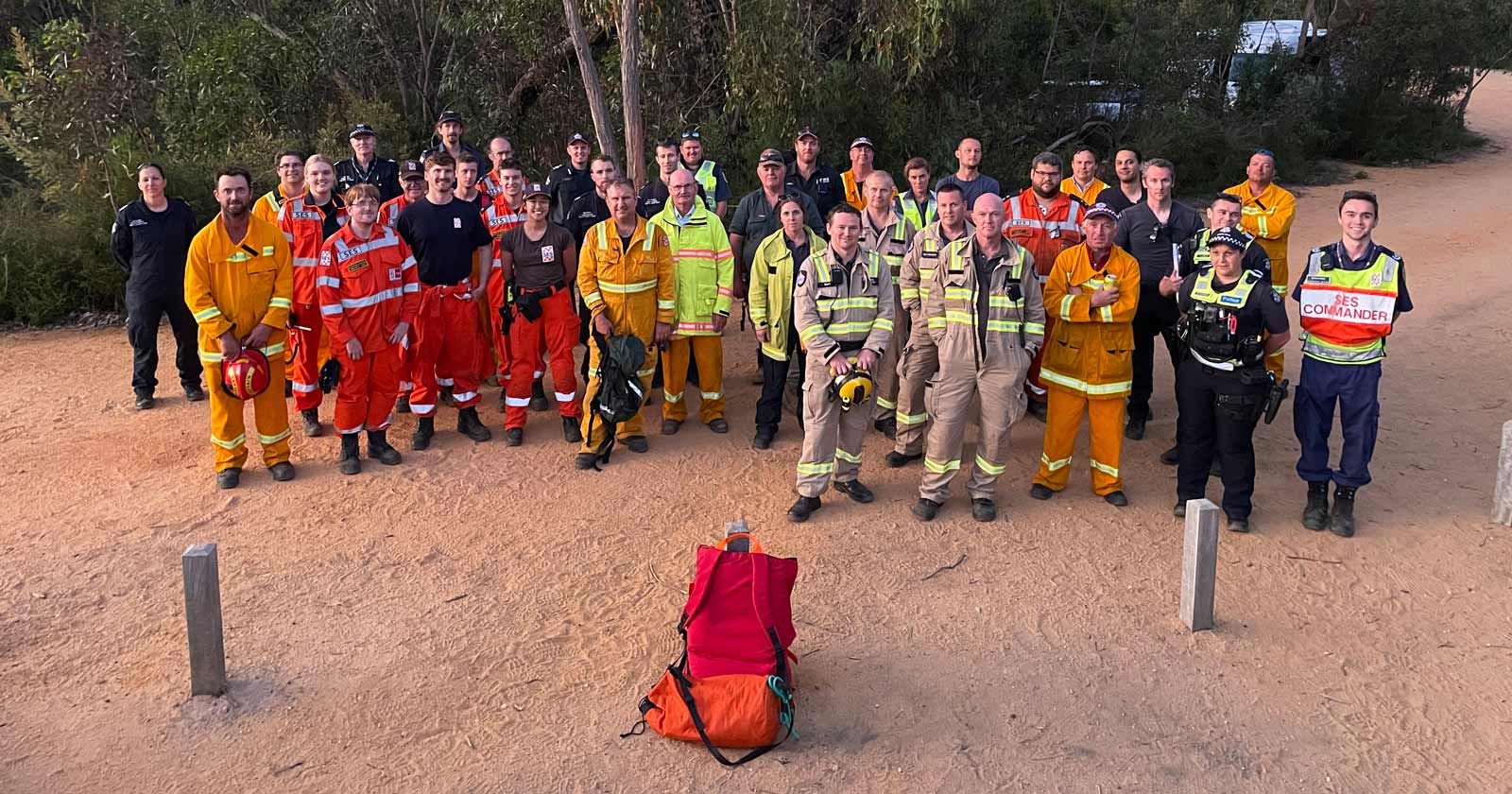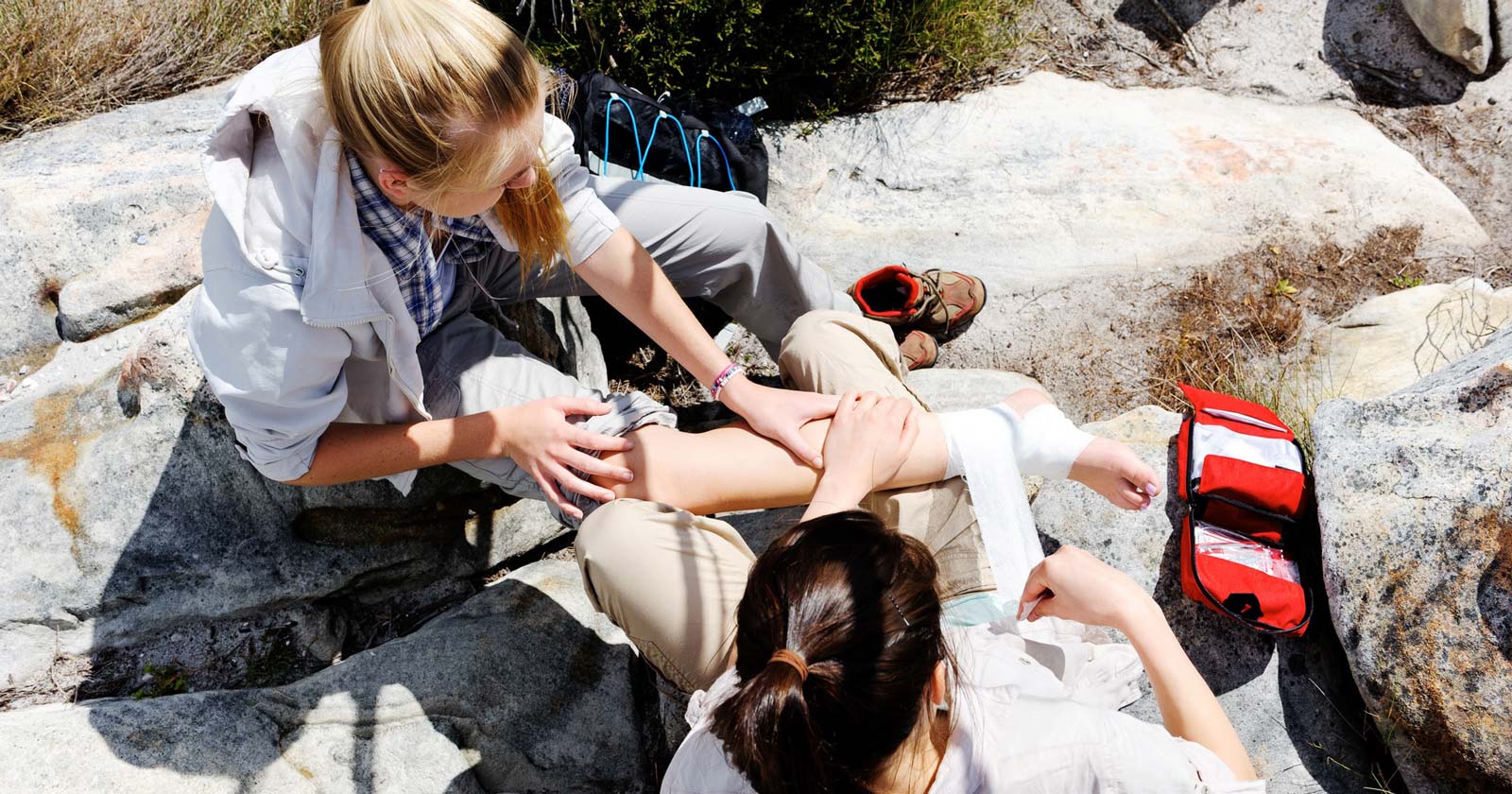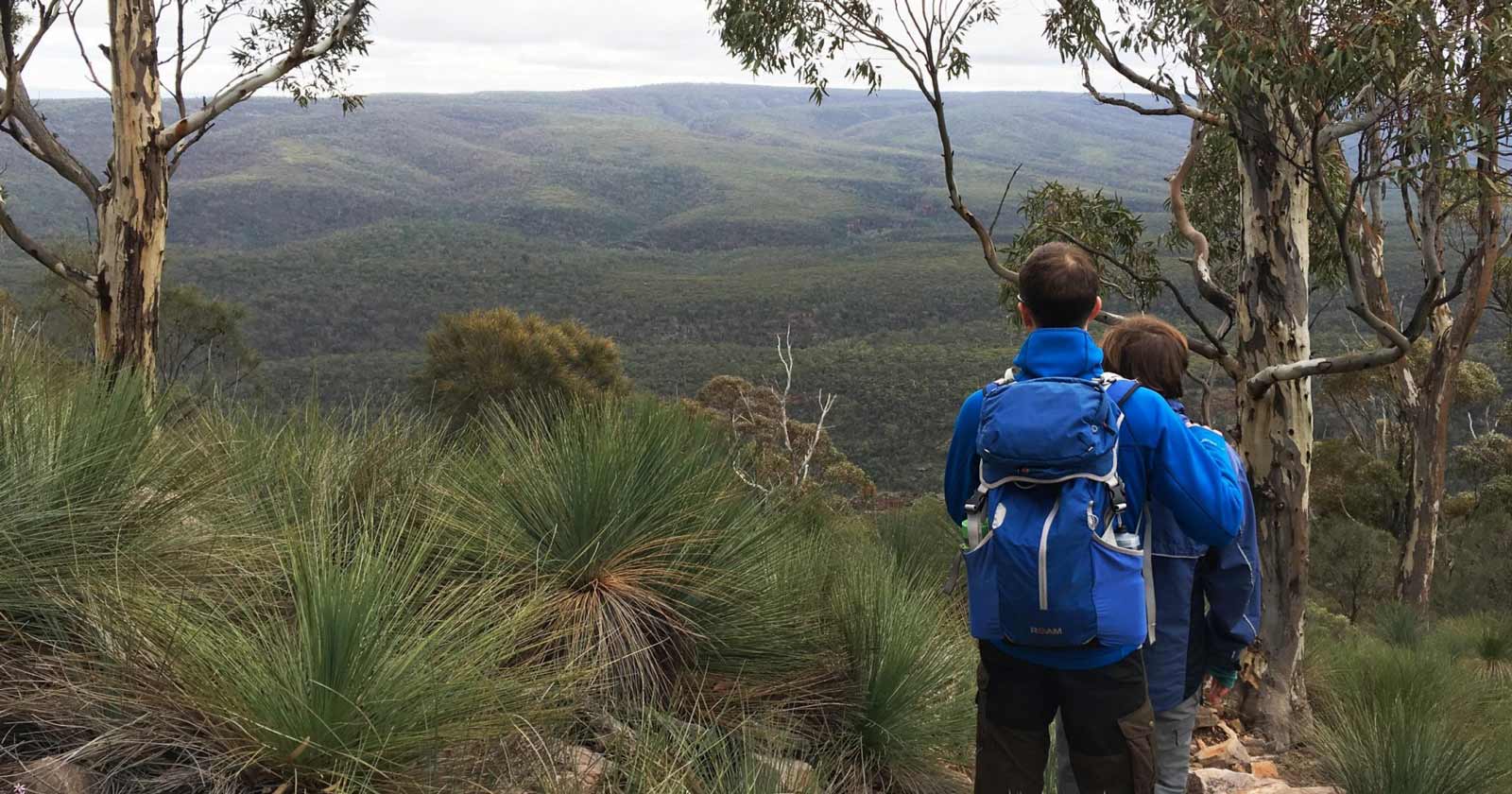Prioritising Self-Reliance in Hiking
Recent hiking incidents across Australia, including three tragic events in lutruwita/Tasmania, one in Queensland, and several rescue operations—including four in a single day in Tasmania—have sparked widespread discussion about preparation and safety on the trails. My heart go out to those affected by these tragic losses.
While the full circumstances behind each incident may never be fully known, and I don’t intend to speculate or suggest these incidents stem from planning shortcomings, they have sparked important conversations around the critical importance of being prepared when venturing into the wilderness.
Despite the ongoing safety messages, one question remains: why do so many still head into the wilderness unprepared?
The answer may lie in a growing culture of instant gratification, where convenience often outweighs caution. Tools like Personal Locator Beacons (PLBs) and mobile phones are invaluable, but they cannot replace the fundamental principles of knowledge, planning, and self-reliance. In fact, over-reliance on these tools can foster a false sense of security, leading people to perceive rescues as guaranteed safety nets, rather than the last-resort lifelines they truly are.

VICSES volunteers lead multi-agency rescue.
The Real Consequences of Neglecting Preparation
The risks of heading into the wilderness unprepared are stark. Here’s what can happen when preparation is neglected:
- Exposure to extreme conditions: Weather in remote areas can change rapidly, leaving unprepared hikers vulnerable to hypothermia or heat exhaustion. Without proper clothing, shelter, or food, survival becomes a race against time. If conditions are unsafe or you are unprepared, it’s better to postpone your hike than to risk your life.
- Navigation failures: Many hikers rely on mobile phones for navigation, unaware that reception is often non-existent in remote areas. Compounding this issue is the reliance on user-generated content from crowdsourced apps, where trail data—such as times, difficulty ratings, and conditions—can be subjective and unverified. This misinformation can easily lead to confusion, pushing inexperienced hikers onto trails beyond their ability and resulting in risky, potentially life-threatening situations.
- Exhaustion and injury: Overconfidence and a lack of preparation are common culprits in hiking accidents. Influenced by social media portrayals of carefree adventures, some hikers venture out without adequate planning, gear or a true understanding of the challenges ahead. Attempting trails beyond their fitness level or skill set can lead to exhaustion, dehydration, or even life-threatening situations. Knowing your limits, being honest with yourself, and planning accordingly is crucial for your safety.
- Delays and risks to rescuers: Every rescue operation places strain on emergency services and puts rescuers at risk. Unfortunately, many of these rescues may have been avoided with proper preparation. The increasing frequency of rescues for under-prepared hikers highlights a growing disconnect between the excitement of outdoor exploration and the reality of the risks involved.
- Insufficient Water Supply: Failing to carry adequate water for the conditions can result in severe dehydration or heatstroke, particularly in high temperatures. In extreme cases, hikers may suffer exposure or become critically unwell before help arrives. Disturbingly, I often witness or hear of hikers heading out without water or running out early into their trip—something that was evident during recent incidents in extreme heat at Werribee Gorge in western Victoria.
The Problem with Over-Reliance on PLBs
There’s no denying that PLBs save lives, and I encourage everyone to carry one every hike. Recently, police praised hikers for carrying these devices during rescues, and for good reason—when all else fails, a PLB can mean the difference between life and death. However, there’s a concerning trend emerging: PLBs are increasingly being used as a “get out of jail free card.”
Hikers may head into the wilderness assuming that as long as they have a PLB, they’re covered. I once had someone tell me that a PLB is their lifeline and that emergency agencies exist to support them when they push their boundaries and things go wrong. “That’s their job,” they said, “so why should I waste time planning when I have a PLB to keep me safe?”
This mindset—viewing rescues as guaranteed safety nets—fuels the false belief that planning is optional.
In conversations, people have made great points to me about not activating a PLB too readily. In a recent chat, I was told: “Having a PLB is great, but walkers should understand it’s meant for life-threatening situations, not as a fallback for lack of preparation.”
My PLB has “Use only during situations of grave and imminent danger” printed on it as a reminder.
A PLB doesn’t stop you from getting lost, prevent hypothermia, exhaustion, or injuries often caused by poor planning. It also won’t help if you’ve chosen the wrong trail, underestimated the challenge, or failed to allocate enough time to complete your hike. A PLB simply signals for help after a situation has gone dramatically wrong. To use it as a replacement for preparation not only increases risk but also places unnecessary strain on emergency resources, which are meant for true life-threatening situations.
The challenge is that not everyone has the experience or preparation to self-rescue, which is a real issue. Media stories often highlight the need for better planning, preparation, and carrying a PLB, which is a positive step. However, Police and search-and-rescue agencies frequently recommend activating a PLB as soon as you’re in trouble rather than waiting until it’s too late. This advice is often driven by the lack of experience or preparation of those being rescued. It’s their priority to keep people safe, so for now, it is likely the best call.
It’s a tough balance for these agencies—they’re focused on keeping people safe but often lack the resources for widespread education and training. That’s why I’m passionate about promoting outdoor skills, preparation, and self-reliance. While encouraging people to carry a PLB and activate it early might be the safest message today for those who are underprepared, it shouldn’t replace the broader need for education and preparation to prevent emergencies in the first place. Hopefully, in the future, we’ll see more people heading outdoors truly prepared.
We all have a responsibility to be as prepared as possible before heading into the outdoors. Over-reliance on technology, without proper planning, can compromise not just your safety but the safety of others who might need emergency assistance.

Bridging the Gap: Why Education Matters
As Tasmania Police, and agencies in other states, rightly urge, preparation is key. Their guidelines—covering everything from carrying a PLB, appropriate gear to researching your trip—are an excellent starting point. But they’re just that: a starting point.
What’s missing is an emphasis on the why. Hikers need to understand the potential consequences of neglecting preparation. Overconfidence, misinterpreted trail difficulty ratings, and an over-reliance on technology are contributing to a dangerous culture where safety protocols take a back seat. It’s not enough to know what to carry or how to plan; people must grasp why these steps are essential to their survival. Without this understanding, guidelines are just another checklist—often lengthy and easily skimmed over.
A comment I saw recently on Facebook in response to a detailed planning post—“Too Long, Didn’t Read”—really struck home for me. It highlighted an interesting dilemma: Are we overwhelming people with the often complex details of the ‘how’? Or is it a reflection of the growing culture of instant gratification, where pretty pictures, likes, and convenience often outweigh caution? Many hikers might skim through instructions or headlines without fully engaging, missing the deeper connection to the real risks. Or, perhaps, is it that we’re not focusing enough on the ‘why’?
Reading that comment made me realise that, despite all the detailed information that myself and others have been sharing about preparation and planning, it wasn’t really getting through. The information is out there, but the real challenge is ensuring it resonates and prompts action. It became clear that the messaging needed to be simpler and easier to digest if we want to reach and engage more people effectively.

Taking Responsibility: A Call to Action
True safety on the trail starts with taking responsibility and cultivating a proactive mindset. While it’s easy to rely on a checklist, true safety comes from understanding why each step is crucial and how it contributes to your overall preparedness.
Before you set foot on any trail, honestly assess your preparedness by asking yourself these critical questions:
1. Route Planning
- Is the trail suitable for my fitness level and experience, and have I checked official sources for time, length, difficulty?
- Have I identified key waypoints, water sources, and potential bailout points along the trail?
- Do I have an alternative route planned if conditions worsen or the primary route becomes inaccessible?
- Have I reviewed official sources for trail information, including estimated time, difficulty, terrain, and known hazards?
2. Gear and Supplies
- Do I have the appropriate gear (e.g., footwear, weather-appropriate clothing, backpack, map, first aid kit)?
- Am I carrying enough food, water, and supplies, with extra for emergencies?
- Do I have essential tools to stay safe and comfortable (e.g., navigation tools, torch, whistle, personal locator beacon (PLB), communication device, battery bank)?
3. Physical and Mental Preparedness
- Am I physically and mentally prepared for the demands of this trail?
- Have I assessed whether my fitness and skill levels are adequate for the trail’s difficulty?
4. Weather and Environmental Considerations
- Have I checked the weather forecast and am I prepared for sudden changes in conditions?
- Have I researched seasonal conditions and trail-specific hazards (e.g., snow, river crossings, heat)?
5. Group Considerations
- Is everyone in the group aware of the plan, including estimated time, terrain, and difficulty?
- Does the group have a designated leader or communication plan in case of separation?
6. Safety and Emergency Preparedness
- Do I fully understand the challenges and potential risks associated with this specific trail?
- Do I have the knowledge, gear, and skills to respond effectively to emergencies—like injuries or sudden weather changes—before they escalate?
- Do I have a clear understanding of how to use my emergency communication device (e.g., PLB, satellite phone)?
- Have I reviewed basic first-aid procedures relevant to potential trail-specific injuries (e.g., snake bites, sprains)?
7. Environmental Responsibility
- Am I prepared to follow Leave No Trace principles to minimise my impact on the environment?
- Do I know the rules and regulations specific to the trail or park (e.g., permits, campfires, wildlife)?
8. Backup and Communication Plans
- Do I have a backup plan if I can’t finish the hike as planned?
- Have I informed someone about my plans, including the trail, estimated return time, and emergency protocols if I don’t check in?
9. Post-Hike Preparedness
- Do I have a plan for recovery, including hydration, rest, and transport back home?
- Have I considered how to notify authorities or emergency contacts if I am delayed or unable to complete the hike?
Education about the risks of overconfidence, the influence of social media portrayals, and the importance of accurate trail information is just as critical as packing the right gear. Hiking isn’t just about checking off gear lists. It’s about engaging with your preparation, understanding the potential risks, and developing the skills and mindset needed to confidently navigate challenges.
For more resources and to build your hiking knowledge, visit the Trail Hiking Australia blog, where you’ll find tips and strategies for Preparing to Hike and Staying Safe on the Trail.
The ExploreSafe website also offers valuable insights on being better prepared, empowering you to enjoy unforgettable adventures—rather than calling for unwanted rescues.
Sharing My Interview on ABC News Breakfast
In this interview on 10 January 2025, I discuss some essential steps that bushwalkers should take to ensure they’re well-prepared for a safe outdoor adventure. While the conversation briefly touched on a recent hiking incident, my primary goal was to highlight safety and preparation for all walkers. While I understand the significance of such events, I was caught a little off guard by the introduction. I want to clarify that my intention was not to comment, critique, or speculate on the specifics of the recent incident. Instead, I aimed to focus on and emphasise the broader lessons we can all learn from incidents like this to make our hiking and bushwalking experiences safer. I hope this chat serves as a valuable reminder for anyone heading out into nature. It’s a shame I didn’t have an hour or so to discuss this important topic, but I’m really thankful for the opportunity.
Final Thoughts
Hiking is an incredible way to connect with nature, but it comes with inherent risks. It’s how we become aware of these risks and how we plan to mitigate or manage them that makes all the difference. While tools like PLBs and mobile phones can save lives, they cannot replace the importance of proper planning and preparation. Over the years, I’ve come to realise that being well-prepared—understanding the trail, packing the right gear, and planning for unexpected challenges—plays a huge role in ensuring a safe and enjoyable hiking experience.
I’ve been hiking for more than a decade (I won’t tell you how many as it makes me feel old!), and during that time, I’ve always made it a priority to research each trail, prepare for different weather conditions, and pack everything I might need. While I’ve been fortunate that nothing serious has gone wrong, I know that’s because of the effort I put into preparation. This approach helps me stay safe and confident, and I believe it’s something that can benefit every hiker.
Recent tragedies and rescues remind us that the wilderness should never be taken lightly. Not all rescues are due to poor planning—some result from unforeseen medical emergencies or other circumstances. However, being well-prepared reduces many of the risks and ensures you’re in the best position to handle the unexpected.
Hiking is more than just having the right gear—it’s about making informed decisions, understanding the risks, and preparing yourself mentally and physically for what lies ahead. Let’s work together to foster a culture of self-reliance, where preparation is not an afterthought, but an essential part of every adventure. By understanding the consequences of unpreparedness and taking the time to prepare properly, we can all enjoy the beauty of the outdoors safely and responsibly.



Absolutely, so many go out unprepared. They see a social media post, like the look of the pictures and head out there with no research on the track vs their capabilities. I’m stunned at how many people have posted about hikes they did on a recent Total Fire Ban day and complained about running out of water because it was so hot. 🙄
There are so many terrific groups out there, formal and informal, willing to support bushwalkers and share their knowledge and experience. Please, please, please, get some experience with a group before you think about heading out solo.
I dont understand why people head out in their sneakers, shorts and no gaiters or water. See it all the time … one snake bite and boof….